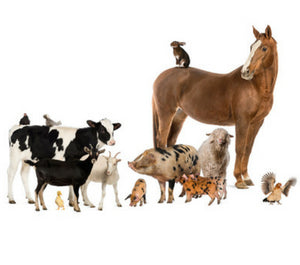20 Common Egg Shell Quality Problems and Causes
1.) Pale-shelled Eggs
The degree of brown color in the egg shell is determined by the quality of deposited pigment in the cuticle.
Causes:
- Infectious bronchitis
- Bird age (older hen)
- High stress in the flock
- Egg Drop Syndrome 76
- Use of chemotherapeutic
agents (i.e. sulfonamides
and nicarbazin)
2.) Lilac Eggs/Pink Eggs
The egg appears to be pink or lilac due to the association between the cuticle and an extra calcium layer.
Causes:
- Stress
- Excess calcium in the feed
3.) Dirty Eggs
If the egg shell is stained by feces, it is important to avoid feed ingredients which cause wet and sticky droppings.
Causes:
- Wet droppings
- Large amounts of
indigestible compounds in
the feed
- Poor gut health
- Electrolyte imbalance/
saline water
4.) Blood Stained Eggs
Usually from pullets in early lay, eggs are contaminated by smears of blood from a prolapsed cloaca, vent pecking, or cannibalism.
Causes:
- Overweight pullets
- Pullets coming into lay
- Sudden, large increases in day length
- Poor hygiene: Cage, trays,
belt pick-up system
5.) Shell-less Eggs
Laid without a shell layer, these eggs are protected only by the shell membrane.
Causes:
- Immature shell gland
- Disease: Avian Influenza
NDV, infectious bronchitis,
Egg Drop Syndrome 76
- Inadequate nutrition:
Calcium, phosphorus,
manganese, or vitamin D3
6.) Soft-shelled Eggs
Laid with an incomplete shell, only a thin layer of calcium is deposited on the shell membrane.
Causes:
- Excessive phosphorus
consumption
- Heat stress
- Bird age (older hen)
- Saline water
- Mycotoxins
7.) Cracks
This problem includes hair line cracks, star cracks, or large cracks that result in a hole in the shell.
Causes:
- Heat stress
- Saline water
- Bird age (older hen)
- Inadequate nutrition:
Calcium and vitamin D3
- Mycotoxins
8.) Corrugated Eggs
Characterized by a very rough, corrugated surface, these eggs are produced when plumping is not controlled and terminated.
Causes:
- Heat stress
- Saline water
- Bird age (older hen)
- Poor nutrition, especially
calcium and vitamin D3
- Mycotoxins
9.) Wrinkled Eggs
Eggs with thinly creased and wrinkled surfaces.
Causes:
- Stress
- Infectious bronchitis
- Defective shell gland
- Overcrowding
10.) Pimpled Eggs
Classified by small lumps of calcified material on the egg shell, the severity of pimples depends on the foreign material present during the calcification process.
Causes:
- Bird age
- Strain of bird
- Inadequate nutrition
11.) Calcium Coated Eggs
An extra layer of calcium can be seen all over the egg or on just one end.
Causes:
- Defective shell gland
- Disturbances during
calcification
- Excess calcium in the diet
12.) Calcium Deposits
These eggs are classified by white, irregularly shaped spots deposited on the external surface of the shell.
Causes:
- Defective shell gland
- Disturbances during
calcification
- Excess calcium in the diet
13 / 14.) White/Brown Speckled
With smaller speckles than calcium deposits, these eggs may be laid down before or after the cuticle is formed.
Causes:
- Defective shell gland
- Disturbances during
calcification
- Excess calcium in the diet
15.) Mottled Shells
When placed in front of a light, the translucent areas appear mottled or glassy as a result of the shell’s failure to dry out quickly.
Causes:
- High humidity in the shed
- Disease and mycotoxins
- Manganese deficiency
- Overcrowding
16.) Body-Checked Eggs
The egg is cracked in the shell gland pouch and then repaired before lay.
Causes:
- Incorrect lighting
- Stress
- Bird age (older hen)
- Overcrowding
17.) Broken and Mended
A diagonal break occurs during formation and is mended again before lay.
Causes:
- Stress during calcification
18.) Misshapen Eggs
These eggs are too small or large, round instead of oval, or differ from normal shapes.
Causes:
- Immature shell gland
- Disease: Avian Influenza
NDV, infectious bronchitis,
Egg Drop Syndrome 76
- Stress
- Overcrowding
19.) White Banded Eggs
If two eggs come into contact with each other in the shell gland pouch, normal calcification is interrupted. The first egg retained in the pouch will have an extra layer of calcium seen as the white band marking.
Causes:
- Stress
- Changes in lighting
20.) Slab-sided Eggs
The second egg that enters the shell gland pouch is not as complete as the first egg and is flattened where the eggs made contact.
Causes:
- Stress
- Changes in lighting
- Disease
Recommended Product





















